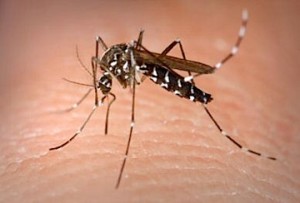Your Guide to Dengue Fever
By kashif Chaudhry | Life Style | Published 14 years ago
 Dengue Fever is a major global health threat and a leading cause of mortality in the tropics and subtropics. It is caused by infection with any one of four serotypes of dengue virus transmitted by the bite of the Aedes mosquito. This mosquito species breeds around habitations and feeds during the day. As many as 100 million people are infected annually, of which about 25,000 die of the disease.
Dengue Fever is a major global health threat and a leading cause of mortality in the tropics and subtropics. It is caused by infection with any one of four serotypes of dengue virus transmitted by the bite of the Aedes mosquito. This mosquito species breeds around habitations and feeds during the day. As many as 100 million people are infected annually, of which about 25,000 die of the disease.
Presentation
Once inoculated into the human body, dengue has an incubation period (during which the virus multiplies) of 3-14 days. Thereafter, in the typical form of the disease, a five- to seven-day acute fever ensues. Recovery is usually complete by 7-10 days.
It is important to appreciate that about half of all dengue infections go completely unnoticed. Some patients have isolated fever while others may produce the typical symptom complex of classic dengue fever (DF). Fever may be as high as 106°F. The fever presents in a nonspecific manner and may not be distinguishable from other infectious illnesses. The fever in DF is often preceded by chills, red speckles on the skin, and facial flushing. It typically begins on the third day of symptoms and lasts five to seven days. The other symptoms associated with DF include headache, which is usually generalised, pain in the back of the eye, nausea or vomiting and a rash that begins on day three and persists for about three days. DF can also be associated with muscle aches, joint pains and generalised fatigue. Abdominal pain when present can be a heralding sign of a more serious form of the disease, known as dengue hemorrhagic fever (DHF).
DHF is characterised by bleeding. This may be as mild as small amounts of oozing from the nose or gums or serious enough to present with copious bloody vomiting, an abnormally heavy period or excessive blood in the stool. Abdominal pain, excessive restlessness, confusion, decrease in body temperature, and a drop in the platelet count are indicators of imminent DHF.
Patients who have previously had DF (over half of which go unnoticed) are specifically at risk for development of DHF. It is also important to keep in mind that it is at the time when the fever is receding that DF patients are at greatest risk for DHF. This is the time to watch for the warning signs mentioned above and seek emergency care. If not properly taken care of, DHF complications (particularly gastrointestinal bleeding) can worsen and induce shock. This most severe and fatal form of dengue is known as Dengue Shock Syndrome (DSS). DSS is characterised by cold-clammy skin, a fast heart rate, decreased blood pressure, delirium, difficulty breathing and damage to the internal organs specifically the liver and kidney. DSS can lead to multiorgan failure and death.
Outcome
Most patients achieve a complete recovery from dengue. Even patients with DHF and DSS usually recover with proper resuscitation. Infection with one dengue serotype confers lifelong immunity against that particular serotype, but still leaves the individual susceptible to the other three serotypes. As mentioned above, a subsequent infection by a different serotype is a major risk factor for the development of DHF and, as a result, DSS.
Prevention
No vaccine is currently available to prevent contracting the dengue virus. Consequently, the most effective protective measures are those that avoid mosquito bites. Repellants and protective clothing are simple effective measures to take. Even better, eliminate mosquito breeding grounds: ensure no water is left standing in flower vases, old tires, etc. Since the Aedes is a day-biting mosquito, mosquito nets are not useful. (Read about some alternative solutions to protecting your home here.)
Diagnosis
DF is diagnosed clinically, based on the patient’s presenting symptoms and signs. A complete blood count might reveal a low white cell and platelet count. Serological testing and PCR are not only very costly but are unhelpful in the initial stages of the disease.
Treatment
Dengue fever is usually a self-limited illness, and only supportive care is required. No specific antiviral medication currently is available to treat dengue infections. Paracetamol should be used to manage the fever. Other agents including aspirin should be avoided, especially in children.
Patients may become dehydrated from fever, vomiting or lack of adequate dietary intake. Patients who are able to tolerate oral fluids should be encouraged to drink oral rehydration solution, fruit juice or water to prevent dehydration. Patients should also have their blood counts measured daily from the third day of illness until one to two days after the fever abates.
Patients who improve can continue to be monitored in an outpatient setting. Patients who do not improve should be admitted to specialised camps or a hospital for hydration. Patients with dengue shock syndrome are treated in intensive care units.
No specific diet is necessary for patients with dengue fever. Bed rest is advised.
When the patient’s fever is going away, watch for the warning signs mentioned above (taken from the CDC site here). If any of them appear, take the patient to the Emergency department of your nearest hospital immediately.
For Further Reading:


